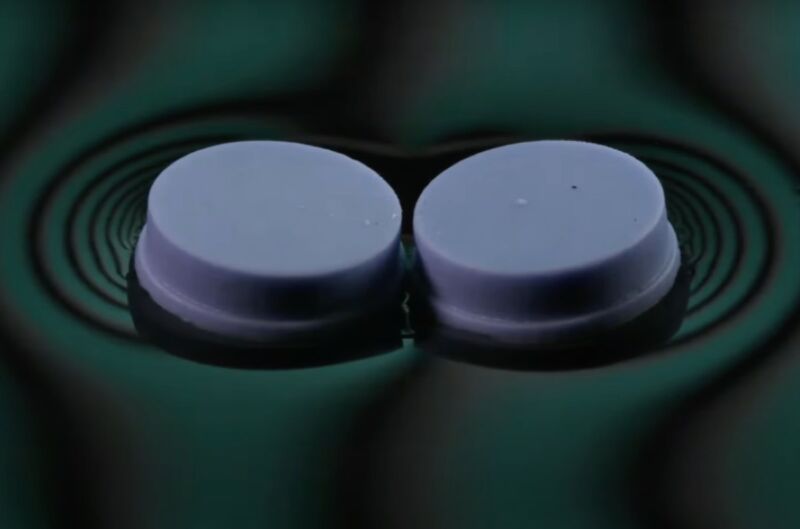Check out the winners of this year’s Gallery of Soft Matter Physics

Enlarge / Brown University scientists used two 3D-printed plastic disks to explore the Cheerios effect. (credit: A. Hooshanginejad et al., 2023)
Scientific research often produces striking visuals, and this year's winners of the Gallery of Soft Matter Physics are no exception. Selected during the American Physical Society March Meeting last week in Las Vegas, Nevada, the winning video entries featured the Cheerios effect, the physics of clogs, and exploiting the physics behind wine tears to make bubbles last longer. Submissions were judged on the basis of both striking visual qualities and scientific interest. The gallery contest was first established last year, inspired in part by the society's hugely successful annual Gallery of Fluid Motion. All five of this year's winners will have the chance to present their work at next year's March meeting in Minneapolis, Minnesota.
Mermaid CerealMermaid Cereal: Exploring the "Cheerios effect."
As we've previously reported, the "Cheerios effect" describes the physics behind why those last few tasty little "O"s of cereal tend to clump together in the bowl: either drifting to the center or to the outer edge. The effect can also be found in grains of pollen (or mosquito eggs) floating on top of a pond or small coins floating in a bowl of water. The culprit is a combination of buoyancy, surface tension, and the so-called "meniscus effect." It all adds up to a type of capillary action. Basically, the mass of the Cheerios is insufficient to break the milk's surface tension. But it's enough to put a tiny dent in the surface of the milk in the bowl, such that if two Cheerios are sufficiently close, they will naturally drift toward each other. The "dents" merge and the "O"s clump together. Add another Cheerio into the mix, and it, too, will follow the curvature in the milk to drift toward its fellow "O"s.
Measuring the actual forces at play on such a small scale is daunting, since they're on about the same scale as the weight of a mosquito. Typically, this is done by placing sensors on objects and setting them afloat in a container, using the sensors to deflect the natural motion. But Cheerios are small enough that this was not a feasible approach. So Brown University postdoc Alireza Hooshanginejad and cohorts used two 3D-printed plastic disks, roughly the size of a Cheerio, and placed a small magnet in one of them. Then they set the disks afloat in a small tub of water, surrounded by electric coils, and let them drift together (attraction). The coils in turn produced magnetic fields, pulling the magnetized disk away from its non-magnetized partner (repulsion).